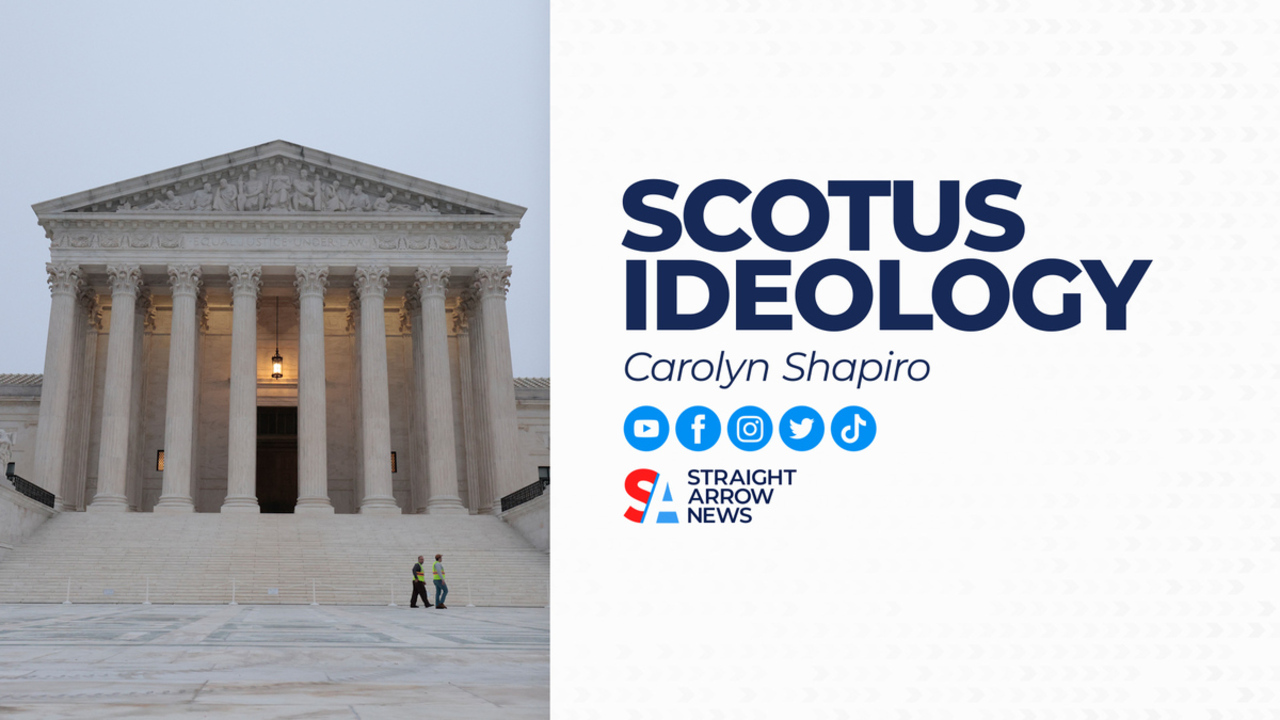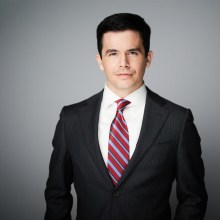
The Supreme Court’s 6-3 conservative majority and decisions that fall along those ideological lines receive most of the attention from the media and the public. But is the high court more ideologically diverse than it appears?
During the 2020 term, 43% of the cases were decided unanimously, and 15%, were decided with just one justice dissenting. For the 30% of the cases that are decided 5-4 or 6-3, not all of those end with the justices joining their expected sides.
Straight Arrow News Political Correspondent Ray Bogan interviewed professor Carolyn Shapiro, co-director of the Institute on the Supreme Court of the United States at the Chicago Kent College of Law.
Ray Bogan:
Fifty-eight percent of the cases in the 2020 term were decided either 9-0 or 8-1. Are the justices really as far apart on their view of the law and the Constitution as it may sometimes appear?
Professor Shapiro
The basic answer is yes. I think they are. Those cases that you’re referring to — the 9-0 and 8-1 cases — tend to be relatively unimportant as a matter of public concern, as a matter of ideological concern. They tend to be obviously very important to the parties, often to the specific area of law in which the justices are ruling. But they tend to be questions about statutory interpretation, questions that are not necessarily controversial in the way that the big headline-grabbing cases are. And so the fact that the justices agree on the more technical cases, the less fraught cases doesn’t seem to me to say anything about whether or not there’s actually ideological division on the court.
Ray Bogan:
Let me give you one example of a case where it was decided 5-4, but it was not necessarily along ideological lines. There was a recent 5-4 decision in Ysleta del sur Pueblo vs. Texas, and Justices Gorsuch, Breyer, Sotomayor, Kagan and Barrett were in the majority, with Chief Justice John Roberts, Thomas, Alito and Kavanaugh in the dissent. That was a very important case about states’ abilities to make laws that impact gambling on Indian and tribal lands. That’s a multi-billion-dollar-a-year industry. So you’re right, it doesn’t get the public attention. But isn’t that still very important for precedent and an industry that brings in close to $30 billion a year?
Professor Shapiro:
It’s an incredibly important case, there’s no question about that. It is not a publicly controversial case. It’s not a case that matches on to public, political and ideological debates. But you’re correct. It’s very important. It’s also a case involving Indian law. And it turns out that Justice Gorsuch has a very different perspective on Indian law than most of his conservative colleagues. So in some ways, it’s not surprising when we see Justice Gorsuch join the liberals because he’s done that before in other cases involving Indian law. Now, Justice Barrett, we haven’t seen rule in this area. So we don’t know a lot about her views. But it was not surprising to see Justice Gorsuch in the majority with his liberal colleagues.
Ray Bogan:
There were 66 cases that the Supreme Court agreed to hear for this current term. But there are two that perhaps get the most attention. One, of course, is the Dobbs abortion case. The other is the Bruen gun rights case. Should the Supreme Court term be defined by just those two cases, even though they had 66?
Professor Shapiro:
I think in many ways, yes. Although I would also add a couple of other cases, the case that was decided just yesterday, involving Maine’s ability to decide not to fund religious schools, and a case that we don’t have the result in yet involving high school coach praying during football games. I think it is appropriate to understand the court’s term in ways that the public can make sense of. So it may not matter all that much as a matter of politics, as a matter of organizing, as a matter of understanding what the court is doing to the public if there are a number of cases involving, say, railroad retirement benefits and issues related to Medicare reimbursement. Those are important issues. I’m not trying to diminish their importance at all. But they are not issues that are going to motivate people to get involved politically, they’re not issues that are going to generate a lot of controversy among the public. On the other hand, abortion, guns, religion, those are the issues that the public is most engaged with, and that are the most controversial in our country. So understanding how the Supreme Court is ruling on these most incredibly salient and controversial issues, I think, is an appropriate way of characterizing what the court is doing.
Ray Bogan:
Former President Trump was extraordinarily influential on the Supreme Court whether you like him or not, because he was able to confirm three justices in four years, we’ve talked about the impact that can have on the most controversial cases about abortion rights or gun rights. But what about the cases that don’t get as much attention? In what ways can a 6-3 majority impact cases that are going to be setting precedent in the same way?
Professor Shapiro:
There are two other areas in which the 6-3 majority is incredibly important, at least. One has to do with the rights of people who have been harmed by government actors, whether because they’ve been falsely convicted, or allegedly have a claim that they are falsely convicted or have a meaningful claim, or because their rights have been violated in some other way. This court has been very hostile to the claims brought by those types of individuals. The other has to do with the law of democracy. And what we’ve seen in this court is that it is very hostile to voting rights; it is very hostile to efforts to ensure that there is meaningful representation across all parts of a state, all types of populations within a state, racially, politically, in terms of, of a party affiliation. They’ve rejected opportunities to ensure that people can vote. So over and over again, we’ve seen that type of rulings from this court, and that is going to have an incredibly important, and in my view, very negative effect on the country going forward.
Ray Bogan:
Now, finally, I want to ask you one more question about public trust in the court. Because of very heated confirmation processes over the last four to five years, trust in the court is down according to many polls. So for people in the public who look at the Supreme Court, perhaps in a different and less trustworthy way than they did five, six years ago. What should they make of some of these rulings that are coming out in this current term?
Carolyn Shapiro:
Well, I’m going to dispute your premise a little bit in that I don’t think it’s attributable solely or even entirely, or largely to the heated confirmation battles. Although they obviously have an effect. I think that what people need to understand (is) that the Supreme Court does need to have a certain amount of political legitimacy. That is partly why we have the confirmation process. That’s why the justices are actually appointed by an elected official, the president. What we do have right now is a court that is in no way representative of the American people in the sense that six of the nine justices have been nominated by Republican presidents and three by Democratic presidents. And several of those who were nominated and confirmed by Republican presidents and Republican Senates were nominated by presidents who themselves did not receive the majority of the popular vote and confirmed by senators who themselves did not represent a majority of the American people. Now, that’s all constitutional. I don’t mean to suggest that anybody did anything in that process that was unconstitutional. But it is problematic if the court needs to rely on the understanding and support of the American people in order to maintain its legitimacy. There’s a lot to be said for some of the reforms that have been discussed among academics and increasingly in other circles for things like term limits, 18-year staggered terms so that every president would have the opportunity in each term to appoint two justices. And we wouldn’t have the court’s makeup dependent on who dies when and whether somebody times their retirement so that they retire in the moment that the president they like is in office.







